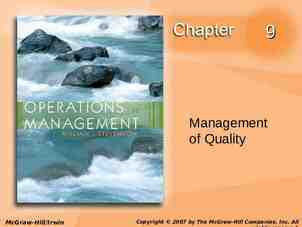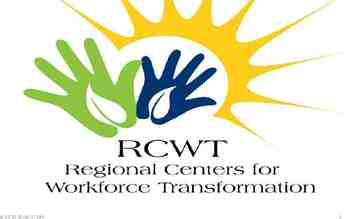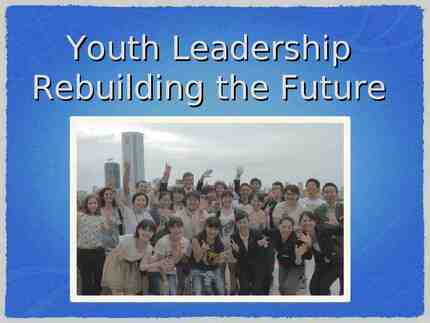9.1 Assessing a change in scale The impact of growth or
19 Slides727.71 KB

9.1 Assessing a change in scale The impact of growth or retrenchment on the functional areas of the business

Learning outcomes You should be able to understand: How to manage the challenges and assess the impact of growth or retrenchment.

Growth or retrenchment When a business grows rapidly or retrenches quickly, this can put strain upon these functional areas: – Human resources – Finance – Operations management – Marketing.

Impact on HR – growth 1. Job security – employees would be asking how permanent the growth is. Employees need to know that growth will continue. 2. Selective hiring – as the workforce grows, HR have to hire more staff. These staff have to fit within the organisation, understand the culture and their roles within it. 3. Self-managed teams – part of introducing a more teambased approach to managing (Unit 6). Managers may need training and support as well as a collaborative style being introduced (Phase 5 in Greiner’s model of growth).

Impact on HR – growth 4. Compensation policy –different financial motivational techniques need to be used. See each of the phases in Greiner’s model of growth for ideas on how the compensation would change. 5. Extensive training –the workforce may need training on new machinery, new processes, new IT or new management techniques. 6. Information sharing – as the business grows, and especially as it reaches Phase 5 in Greiner’s model, more information needs to be shared. The organisation’s structure changes from an entrepreneurial style to a more traditional hierarchy in which managers are further away from the workforce.

Impact on HR – retrenchment 1. Job insecurity – employees may be made redundant and this will affect the morale of remaining employees. Job insecurity could make managers risk-averse. HR would be busy with redundancies and retraining for existing staff. 2. Selective firing – HR may have to select employees for redundancy; use voluntary redundancy; delayer management; have a recruitment freeze; or retrain staff to take on more responsibilities. 3. Self-managed teams – as the workforce/managers reduce in number, more employees may have to take on supervisor/manager roles (especially if delayering has occurred). Employees would have to be selected and trained for this role.

Impact on HR – retrenchment 4. Compensation policy – the bonuses paid may have to change; or redundancy payments may be needed. This could put a strain on an already tight budget for HR. 5. Extensive training – as the business and workforce reduce in size, employees may need training to do roles they were not hired to do. 6. Information sharing – as the business shrinks, the processes would also be reduced. This may make information sharing easier.

Impact on operations management: growth 1. Processes – the operations management team may have to change the way the products are manufactured. This can cause problems with the experience curve – it takes time for that change to be embedded and the improvements in efficiency to be made. 2. Technology – operations management may use more technology, both to produce the goods and in tracking workin-progress, stock levels, orders, etc. The whole process can become far more efficient – but also complex and relying upon skills in IT and not necessarily in manufacturing.

Impact on operations management: growth 3. Resources – operations management may require far more investment in new machines, computers, training, etc. All this needs to be planned and budgeted for. 4. Workforce – the workforce may change from being labour-intensive to being machineintensive. This can come with its own problems (see HR issues, earlier).

Impact on operations management: retrenchment 1. Processes – if the business is shrinking, processes may need to change to reflect the drop in demand. The business will not be able to afford large stocks of raw materials, work in progress or completed products, as this is money that is tied up unnecessarily. 2. There would be less investment in new technology during retrenchment. This lack of investment could injure the business’s ability to compete, and unit costs may rise faster and higher than competitors’.

Impact on operations management: retrenchment 3. Lack of resources available. Limited investment in new machinery means the old machinery has to work harder. Businesses producing less may have a low capacity utilisation: this would increase the unit cost. 4. The workforce may become unmotivated with low morale. It may also prove difficult to hire good staff in the future.

Impact on operations management: retrenchment This is related strongly to the HR impacts as staff may be made redundant; hours may be reduced; retired or leaving staff not replaced. There can be an issue where all the experienced, good staff leave, leaving only the poorly qualified and less experienced (i.e. those not able to get work elsewhere).

Impact on marketing: growth The growth of the business may be down to improved marketing techniques – establishing what customers want and fulfilling it. 1. Marketing strategies would have to reflect the competitiveness and complexity of the business. 2. Specialisms – more specialists will have to be brought in, through employment or outsourcing.

Impact on marketing: growth 3. More resources would be needed to implement more complex marketing strategies. More market research would be needed to ensure the company was making what the customer wanted. The investment in new products or markets will be very different from the original product or market, so more research will be needed for the new areas to guarantee a return on investment. 4. Workforce – greater specialism, especially in marketing, which may become more complex, using a greater range of promotional techniques and reaching more customers.

Impact on marketing: retrenchment Mostly HR issues: workloads would increase as specialists were made redundant, etc. This could place a strain on the workforce that remains.

Impact on finance: growth 1. Capital – additional capital may be required to fund growth, e.g. to improve production processes, invest in a marketing campaign or training to make the workforce more efficient. 2. Cash flow – the timing and amount of cash required to replace or upgrade capital equipment is important. How the business resolves this can affect their ability to grow, i.e. should the business buy new equipment outright and use the retained profits or should they use a lease or long-term loan and therefore use cash-flow money? They may need the lump sum to remain in the bank, or may have cash-flow problems already. 3. Acid test ratio/current asset ratio – businesses need enough money to fund their day-to-day operations. If rapid growth occurs, this may be an issue. Accountants would have to examine the debtors and creditors to ensure that customers paid invoices promptly and the best deals for credit were obtained from suppliers.

Impact on finance: growth 4. Taxation – as the business grows, its financial affairs become more complex, including its liabilities for taxation. Specialist tax advisors may be needed to ensure the business is as efficient as possible when paying their taxes. 5. Shareholders – the growing business may float on the stock market. The shareholders’ expectations of dividend payments and share price rises then have to be taken into consideration. If the business remains a Ltd company, then the shareholders may still have high expectations of being able to take money out of the business. 6. Controls – the finance department needs to control the costs of the organisation better. This could include better budgeting, more efficient purchasing, greater responsibilities taken over the costs of goods. Specialists are needed in the finance department, and financial training for managers so that they can manage their budgets more accurately.

Impact on finance: retrenchment The finance department may have to: – Sell off fixed assets – Sell off current assets (stock etc.) – Renegotiate bank loans or debts – Chase debtors so that cash flow can be improved.







